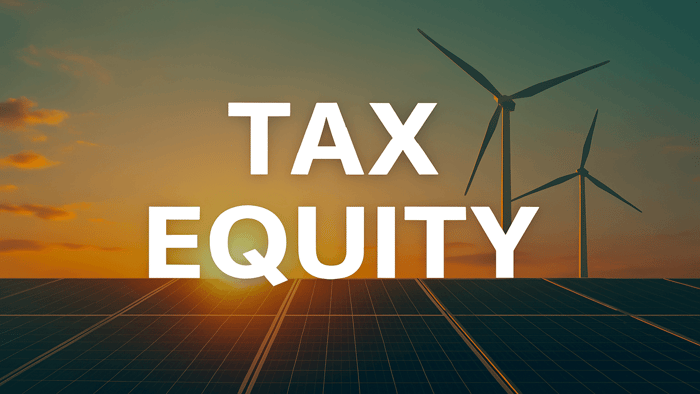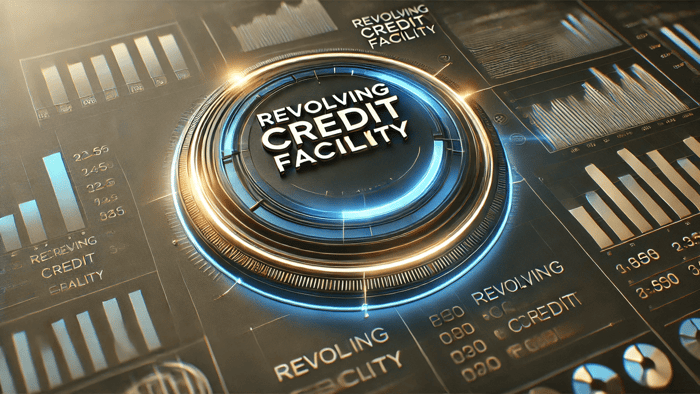The U.S. renewable energy market relies on innovative financing tools to unlock the full potential of federal incentives. Tax Equity is one such tool that monetizes federal tax credits and depreciation benefits—amounting to at least 44¢ per dollar of capital cost for a typical solar project—thereby transforming these tax benefits into a valuable source of project funding. In most solar projects, Tax Equity covers about 35% (plus or minus 5%) of the total project cost, with the remaining financing met through a mix of debt and often minimal sponsor equity.
1. Introduction: What Is Tax Equity?
Tax Equity ("TE") is a specialized financing mechanism designed to capture federal tax benefits that most project sponsors cannot efficiently use on their own. Unlike traditional financing forms, investments in this area enable renewable energy projects to monetize incentives such as the Investment Tax Credit (ITC) and accelerated depreciation. This strategy not only improves project economics but also bridges the gap between upfront capital requirements and long-term revenue streams.
Key aspects include:
Monetization of Tax Benefits: Converting tax credits and depreciation into upfront cash flow.
Financing Strategy: Typically, investments in this structure cover about 35% of a solar project’s cost, with the remainder financed predominantly through debt—often structured as back-leveraged debt—and sponsor equity.
2. The Role of Tax Credits: ITC vs. PTC
Federal tax credits form the cornerstone of these financing deals, with two key incentives driving the market:
Investment Tax Credit (ITC)
Definition: Provides an immediate credit based on a percentage of the eligible investment, particularly benefiting solar projects.
Key Features:
Offers a significant upfront reduction in tax liability.
Enhancements under the Inflation Reduction Act (IRA) now include transferability and direct pay options, increasing investor flexibility.
Production Tax Credit (PTC)
Definition: Awards a per-kilowatt-hour credit over a defined period based on actual energy production.
Key Features:
Primarily benefits wind projects, though it applies to other technologies.
Delivers benefits incrementally over time rather than all at once.
Also subject to improvements under the IRA, further enhancing its appeal.
Both ITC and PTC are integral to Tax Equity deals, lowering the effective cost of capital and driving the financial feasibility of renewable energy projects.
3. Where Tax Equity Sits in the Capital Stack
In renewable energy financing, the capital stack comprises multiple layers working together to fund a project. For most solar projects:
The incentive financing component, driven by Tax Equity, typically contributes about 35% (plus or minus 5%) of the total project cost.
The remaining capital is predominantly provided by debt—often arranged as back-leveraged debt—and supplemented by sponsor equity.
Cash Flow Waterfall
The cash flow distribution is carefully structured:
Operating Expenses: Cash flows first cover all operational costs.
Tax Equity Investor Distributions: Next, payments are made to those capturing the federal benefits, reflecting their priority in the repayment hierarchy.
Debt Service: Cash is then allocated to service the back-leveraged debt.
Sponsor Equity: Finally, any remaining cash flows go to the project sponsors.
Notably, most debt is back-leveraged, meaning it sits behind the investors receiving Tax Equity benefits in the repayment hierarchy. This structure underscores why capturing and monetizing federal incentives is the core financing strategy for many solar companies.
4. Common Tax Equity Structures
A deep understanding of various structures is essential for project finance professionals. The three primary structures used in solar finance include:
Partnership Flip
Mechanics:
The solar company and the investor form a partnership to jointly own the project.
Pre-Flip Period: The TE investor initially receives nearly all the tax benefits and a major share of the project’s cash flows until a target yield is achieved.
Post-Flip Period: Once the yield target is met, the cash flow allocation "flips," allowing the sponsor to receive the majority of subsequent cash flows.
Variations:
Yield-Based Flip: Triggered when the investor reaches a specified yield.
Fixed-Flip: Involves predetermined cash distributions that let the sponsor retain most cash flow after the flip.
Industry Insight:
“The partnership flip remains the workhorse of the solar tax equity market.”
Sale-Leaseback
Mechanics:
The solar company sells the project to an investor and then leases it back.
This structure transfers all tax benefits to the TE investor while allowing the sponsor to continue operating the project.
Advantages & Disadvantages:
Simplifies the transaction by separating operational control from tax benefit ownership.
May require the sponsor to remit a portion of the sale price as prepaid rent, which can complicate cash flow.
Inverted Lease
Mechanics:
An inverted lease involves transferring rights to federal incentives through a lease arrangement rather than an outright sale.
This structure is particularly popular in rooftop markets where maintaining operational control and retaining depreciation benefits is critical.
Key Considerations:
It provides a different tax treatment compared to sale-leasebacks and is often structured to optimize the allocation of both ITC and depreciation benefits.
Although less common, it is valuable in specific scenarios related to regulatory and market needs.
Each of these structures is designed to extract maximum value from federal incentives, making Tax Equity a central element in the financing strategy of solar projects.
5. Explaining Back-Leveraged Debt
A crucial component of many renewable energy financing deals is back-leveraged debt:
Definition:
This debt is structured to be subordinate to the TE investors receiving federal incentives.
Key Characteristics:
Repayment Priority: Back-leveraged debt sits behind the Tax Equity component. In the cash flow waterfall, investors capturing these benefits are paid before debt service.
Industry Insight:
Understanding the interplay between Tax Equity and back-leveraged debt is vital for designing financially robust structures that balance risk and reward.
6. Impact of the Inflation Reduction Act (IRA)
The Inflation Reduction Act has introduced several changes that are reshaping the market for federal incentives:
Transferability:
The ability to transfer tax credits to unrelated parties significantly broadens the pool of potential investors in these deals.
Direct Pay:
Certain taxpayers can now receive direct cash payments in lieu of tax credits, enhancing the appeal and predictability of such financing.
Broader Participation:
These enhancements benefit smaller sponsors, public entities, cooperatives, and other non-traditional market players who previously struggled to use federal tax benefits efficiently.
Market Dynamics:
With these provisions, the market for federal incentives is evolving to become more accessible and competitive, potentially reducing financing costs and expanding project opportunities for Tax Equity investments.
7. Conclusion: What Every Project Finance Professional Should Know
In summary, mastering Tax Equity is essential for professionals involved in U.S. renewable energy project finance. Key takeaways include:
Understanding the Basics:
This financing approach converts federal tax benefits—namely the ITC and depreciation—into a critical source of upfront project funding, typically covering about 35% (plus or minus 5%) of the overall cost.
Capital Stack Dynamics:
While this mechanism plays a central role, the remaining project funding is predominantly provided through back-leveraged debt and commonly minimal sponsor equity.
Structural Variations:
Whether using partnership flips, sale-leasebacks, or inverted leases, each structure is designed to maximize the monetization of federal incentives.
IRA Enhancements:
Provisions like transferability and direct pay under the IRA are reshaping the landscape, making these deals more attractive to a broader range of investors.
Whether you're aiming to transition into renewable energy finance or sharpen your project finance modeling skills, the Renewables Valuation Analyst (RVA) Certification Program offers a structured and in-depth learning path. The program is designed for professionals seeking practical, real-world expertise in evaluating and financing renewable energy projects.
The RVA Certification Program includes:
Excel DNA for Project Finance Modeling
A foundation course that teaches you how to structure dynamic and auditable models using Excel best practices, tailored to project finance.Advanced Renewable Energy Financial Modeling
A deep dive into equity-focused modeling for renewable assets, with hands-on instruction for building full financial models from scratch.Expert-Level Project Finance Modeling for Renewable Energy
An advanced course focused on the debt side of project finance, covering topics such as DSCR-based sculpting, debt sizing, DSRAs, DSRFs, and cash sweeps.Financial Model Template Package
A collection of customizable model templates for solar, wind, and hydro assets, used by banks, developers, and advisors.Real-Life Case Study Courses
Simulations of real projects based on actual information memoranda and lender term sheets, applying the skills learned in earlier modules.
Upon completion of all included courses, participants receive the Renewables Valuation Analyst Certification, demonstrating a strong command of renewable energy financial modeling and valuation.
To learn more, visit the RVA Certification Program page and explore how it can support your professional goals.






